Last Saturday, before going to a friend's farewell dinner at Roti Roppongi, I decided to while away my time at Roppongi Hills. Around the area, I found several advertisements of exhibits currently being held at Mori Art Museum. What caught me was Takashi Murakami's 500 Arhats exhibit. Since time was limited, I took note of it that the exhibit will run until 6th March -- I still have time.
But the next day, looking at a cloudless blue sky outside prompted me go out and just travel to the city. I decided to go to the exhibit.
 |
Mori Art Museum is located at the 54th floor of Roppongi Hills. In this floor, there are three exhibit rooms, a view deck overlooking Tokyo, and restaurants.
This is not my first time at Mori Art Museum. My first was with a friend and an older officemate in 2004, who took us to see Akira Kurosawa's exhibit (yes, THE Akira Kurosawa. World class director). The second time was with T in 2009. It was an exhibit about future of medicine.
|
 |
Murakami's works are contemporary but classical in the sense it will survive over time because of its uniqueness. In one of his interviews, he refused his works to be categorized as contemporary because contemporary does not last.
|
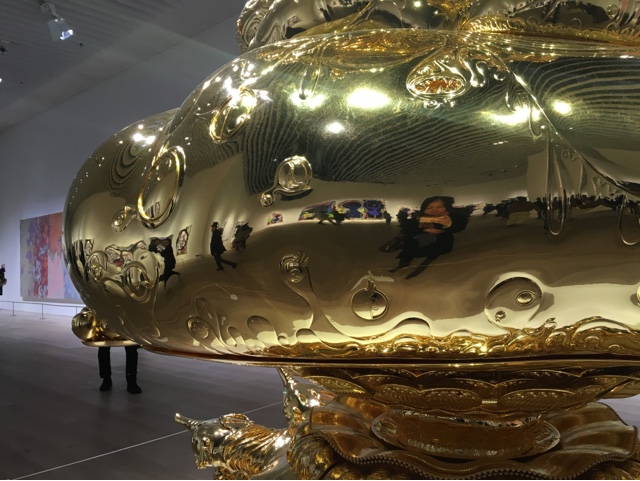 |
I am not familiar of him but his works are familiar to me but I just don't know to whom the credit should be given.
He did collaborate with Louis Vuitton (remember those colored monograms. It was his).
|
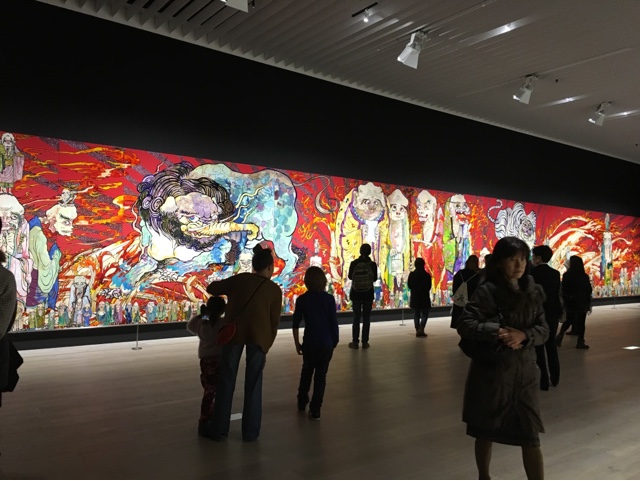 |
This hall displays the 500 Arhats. In Buddhism, Arhats are the worthy ones. One who has attained nirvana.
As a gesture of gratitude to the Qatari government on the aid received by Japan during the Great Eastern Japan Earthquake in 2011, along with his other works, the 500 Arhats exhibit was first shown Doha, Qatar.
|
 |
These three huge Arhats are Panthaka, Angaja and Subinda. They are three of the sixteen top Arhats. Each Arhat (all 500 in these exhibit) have their personality, some not even very appealing but still an Arhat.
|
 |
The artworks were not made by Murakami alone. It was done with the help of around fifty art students in Tokyo. Sketches of the original work are even displayed. The method used is silkscreen printing.
|
 |
Surprisingly not crowded for a Sunday. Well, it could be that the exhibit began in October last year.
|
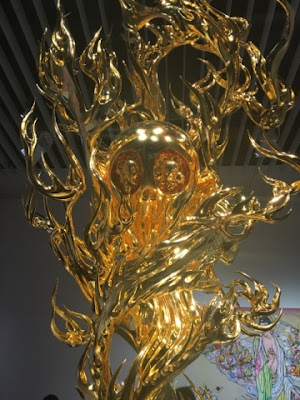  |
| He has this penchant for skulls which symbolizes death. |
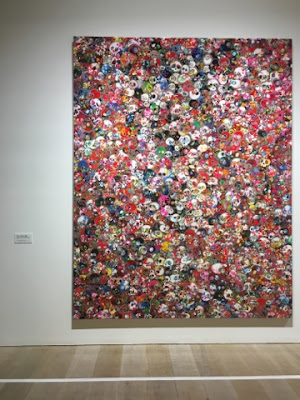  |
If Andy Warhol's iconic works are the Campbell Soup and Marilyn Monroe pop art, Takashi Murakami made icons, too. His first character was Mr. DOB (right photo). Original Mr. DOB was in blue with Mickey Mouse ears, huge eyes and creepy smile.
|
 |
This wall shows a Red and a Blue Oni (Ogres) in Japanese folklore.
|
 |
At the museum's souvenir shop, these couches covered with Murakami's Ohana (Flower) iconic artwork are being sold. Who knew such simple drawing could be iconic that even a three year old with the help of stencil rulers could have done it. I love the icon, actually. It's a happy icon.
|
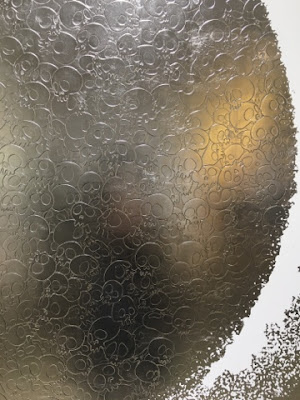  |
(Left) Skulls embossed on canvas. (Right) Roppongi Hills at night.
It was freezing cold but art can't wait.
This is one of the best exhibits I've seen so far in Japan. I can't wait to see more. Part of my travel goal this year is to visit every museum as far as time permits. Be it cultural or art, I am aiming to visit many more in the coming days.
|

















No comments:
Post a Comment